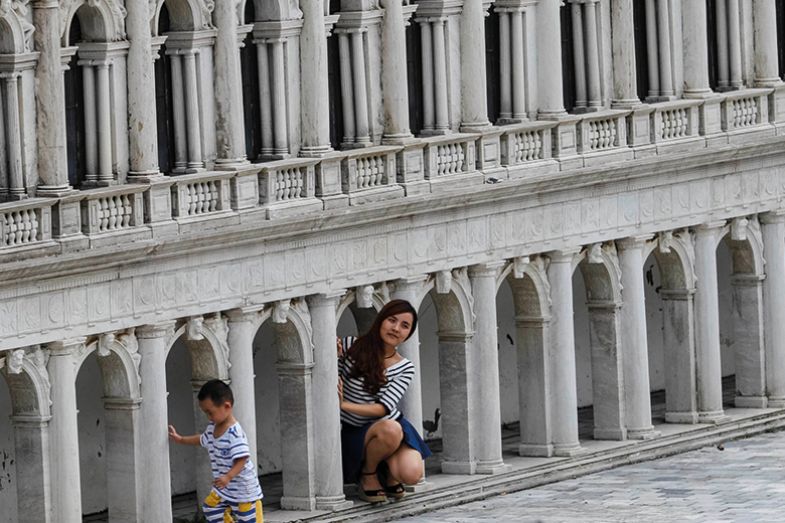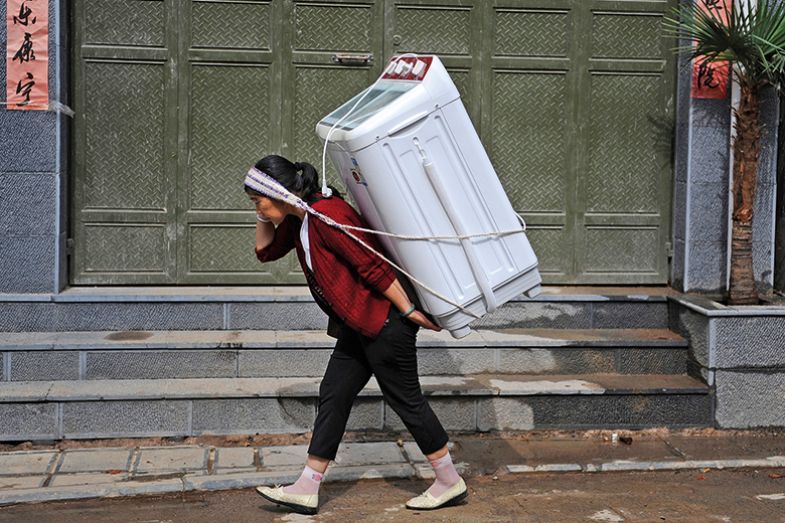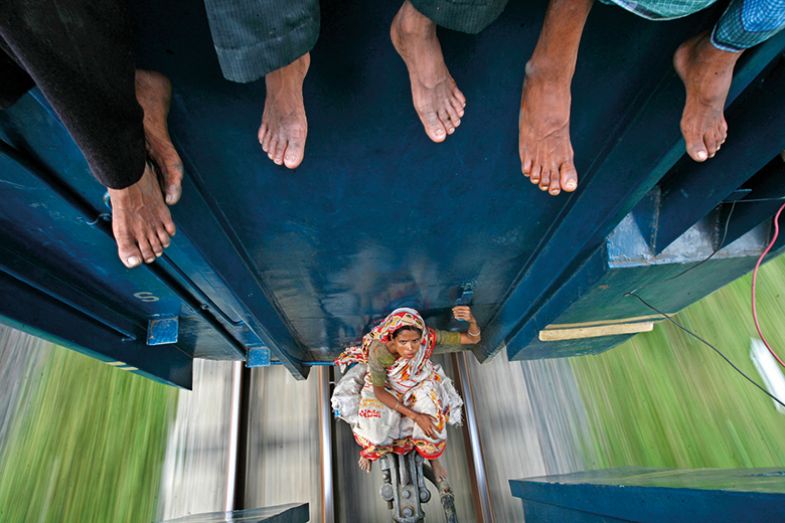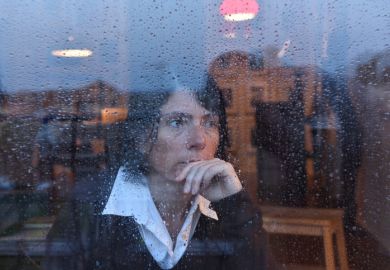Asia is not known for its gender equality.
In the World Economic Forum’s Global Gender Gap Report 2018, China, India, Japan, South Korea and Malaysia are all outside the top 100 of the 149 nations surveyed, based on women’s economic participation, educational attainment, health and survival and political empowerment. Seven of the bottom 10 nations are Asian or Middle Eastern, including Saudi Arabia, Iran, Iraq and Pakistan. Even Singapore is only 67th, while Indonesia is 85th.
The Swiss-based forum of national parliaments, the Inter-Parliamentary Union, also rates many major Asian nations low for their level of female representation. While China and Singapore rank 72nd and 80th respectively out of 192 nations, Pakistan, Saudi Arabia, Indonesia, South Korea and Malaysia are all outside the top 100. India languishes at joint 148th and Japan at 164th.
And among the 37 members of the Organisation for Economic Cooperation and Development, the highest gender pay gaps are recorded by South Korea (where the difference between median male and female earnings is 34.1 per cent of male earnings) and Japan (24.5 per cent), based on 2018 figures.
It is hardly surprising, then, that Asia’s universities are similarly undistinguished for their gender credentials – despite the rapid progress some of the continent’s universities have made on other global comparators.
A lack of female representation in university leadership is, of course, a worldwide phenomenon. However, the imbalance is even more striking in Asia. Indeed, the inequalities may be exacerbated by the fact that male-dominated fields in science, technology, engineering and mathematics are seen in Asia as the engines behind the growth of elite institutions, and are therefore awarded the lion’s share of public funding.
Analysis of the websites of the top 10 universities in Times Higher Education’s Asia University Rankings shows that none have female leaders, and few have women in senior management roles. Of 59 presidents, deputy presidents, provosts, executive vice-presidents, senior vice-presidents and vice-presidents, only nine are women, making up about 15 per cent of leadership at these 10 institutions.
Meanwhile, of the mere 39 women-led universities in the top 200 of THE’s World University Rankings 2020, none are Asian. And in the top 100 universities for gender equality – a subsection of THE’s Impact Rankings 2020 – there are just nine Asian institutions (including two women’s universities) – mostly from Indonesia and Malaysia. The scores are based on a number of factors, including proportion of senior female academics, female authorship of papers, and female students’ access and progress.

On that last measure, at least, Asia performs reasonably well by international standards. Over the past generation or two, the number of young women enrolling in higher education has risen across the continent to match or even slightly exceed enrolments by young men.
Surprisingly, however, more progress has been made by the developing countries in Southeast Asia, rather than the established powers further north. This is underlined by Unesco’s Science Report: Towards 2030; it reveals that the Philippines, Thailand, Malaysia and Vietnam all have about equal numbers of male and female researchers, and also have more female senior leaders, while just 15 and 18 per cent respectively of researchers in Japan and South Korea are women, against a world average of 28 per cent: figures that fall to 5 and 10 per cent for academic engineering.
Women’s representation also falls consistently between ascending levels of seniority. Again, the “leaky pipeline” phenomenon is well known across the world, but is particularly stark in Asia. In India, for instance, slightly more than half of university instructors are women, but statistics from the All India Survey on Higher Education (2018-19), produced by the national government, show a sharp drop-off from entry-level to senior roles. While 42 per cent of tutors or demonstrators are women, this number falls to 16 per cent for assistant professors or lecturers, 13 per cent for associate professors or readers and only 8 per cent for full professors or equivalent.
In Japan, meanwhile, women account for about a quarter of university instructors, but only 16 per cent of researchers or professors, according to the government’s Women and Men in Japan 2019 report: the worst figure in the OECD. At elite institutions, the figure drops further. And less than 10 per cent of Japanese university leaders are female.
China has similar numbers, with the few women who make it to the top of universities generally holding fewer higher degrees than their male counterparts, according to the 2018 book The Making of Female University Presidents in China (2018), by two researchers at Shanghai Jiao Tong University. And while women make up about 40 per cent of university academic staff in Hong Kong, they are concentrated at lower pay grades, comprising less than 20 per cent of professors, readers, principal and senior lecturers, according to an analysis of government figures by the South China Morning Post.
The disparity is even greater at the top. In Hong Kong and Singapore, no major higher education institution has ever had a female leader.
So what is the problem? According to a 2017 survey of female academics in Hong Kong carried out by Sarah Jane Aiston – now a senior lecturer in the department of education and social justice at the University of Birmingham – the main factors dissuading women from pursuing leadership roles include the heavy workloads involved, a desire not to be distracted from research and scholarship, and a perception that leadership is a “male-dominated space”.
The Hong Kong university leaders whom Aiston interviewed mostly identified “family” as the main reason for the imbalance, according to the resulting report, Silent Witness: Why are Women Missing from Hong Kong Academic Leadership?. However, survey respondents cited a wide range of additional issues, including a lack of support and encouragement, challenges with work-life balance, difficulty reaching full professorships and gender stereotyping.
“The underrepresentation of women was conceptualised as a ‘glass ceiling’,” the report says. And while neither survey respondents nor university leaders supported gender quotas, 83 per cent of respondents supported the idea of a women’s leadership programme.
But are such interventions really necessary? Won’t the much greater levels of gender equality among younger academics automatically translate into more equitable leadership in a generation’s time? Not according to Gina Marchetti, a University of Hong Kong professor who chairs the arts faculty’s committee on gender equality and diversity.
In her faculty, the gender split at assistant professor level over the past five years has been roughly 50:50. At the tenured or associate professor level, however, women drop to about 35 per cent. Then there is a “huge drop-off” to less than 20 per cent of women who make it to full professorships, Marchetti says. But she attributes this to a number of factors, none of which seem likely to resolve themselves.
The effect of “child-rearing” on women’s productivity and availability is clearly one widely cited, global issue. But exit surveys suggest that “it’s not just kids”, Marchetti says. “It’s elderly care and housework. Add on top of that sexual harassment, difficulty getting published – and the deck is stacked against women. Women really struggle with bias. They struggle to get published, to get grants, to get their research considered.”
Some of these issues take a particularly heavy toll on women in Asia given the social attitudes that give rise to the big gender gaps mentioned at the beginning of this article. Marchetti says that age may also be an issue in a sector where few make it to a professorship before the age of 40.
“Age exacerbates gender inequality in Hong Kong higher education because of mandatory retirement,” she says. “Women [in Hong Kong] tend to take more time off for family, struggle more with gender bias and sexual harassment, reach professorships later, and then are not promoted into senior administrative roles in any significant numbers because they are considered ‘too old’.” While institutions often make exceptions for senior staff, the official retirement age at some Hong Kong universities is 60.
Still, the University of Hong Kong is more progressive than many other institutions in the region. The book Gender and the Changing Face of Higher Education in Asia Pacific, published in 2019 by Palgrave Macmillan, found that the institution has the highest representation of women leaders among five prominent East Asian universities examined.
“For working toward inclusivity of intellectual leadership in the East Asian academic profession, there need to be more culturally sensitive and gender-appropriate policies and practices in the human resource management in universities, which are sensitive to the personal and professional lives, including marriage and family obligations,” writes Hei Hang Hayes Tang of the Education University of Hong Kong, one of the book’s authors.

The book also highlights National Taiwan University, Taiwan’s top-ranked university, as an institution that “has made better progress in gender equality and university management”, with women making up about a quarter of its departmental leaders.
Chiapei Chou, the first woman to be appointed – in 2019 – executive vice-president of the institution, says that, in Taiwan, there is not so much a glass ceiling for female academics as a “net ceiling”, through which women can pass if they are determined enough. Chou – who is also a distinguished professor in her university's civil engineering department – does not feel that she was treated differently from men when she entered competitions or sought funding as a researcher. While the island does not have the sorts of affirmative action programmes available in countries such as the US, its Ministry of Science and Technology does award a relatively high proportion of project grants to female engineering applicants.
Still, while 20 per cent of National Taiwan University’s engineering students are women (compared with about 40 per cent of the overall student body), that proportion falls to 10 per cent among engineering faculty. “Female students have very high performances and the ability to go on to being academics, but most young women do not want to follow that track,” says Chou. “In Taiwan, once a female gets married and has a family, traditionally, she will spend more time taking care of the family, especially if there are children.”
That said, once a woman enters the career track at National Taiwan University, she generally stays on it. Chou says that the institution’s management offer “encouragement” to younger female academics, and work-at-home options for both male and female faculty when there is a need. As a result, the majority of women who start as assistant professors eventually make it to full professorships.
There are other encouraging signs, too. At least in certain institutions, Asian universities are beginning to make substantive progress on gender equality.
The elite University of Tokyo, known as Todai, has long been criticised for gender inequality. Last year, prominent Japanese feminist Chizuko Ueno – professor emeritus at Todai – remarked during one of the institution’s matriculation ceremonies that only 20 per cent of the incoming students were women. Just 8 per cent of Todai professors and one out of 15 deans are women, the sociologist added.
A Todai spokesperson tells THE that the university’s president, Makato Gonokami, “and the university as a whole recognise the gender gap as one of the biggest challenges facing The University of Tokyo. President Gonokami has prioritised gender equality to revitalise the organisation through increased diversity.”
Last year, for instance, Gonokami joined The 30% Club Japan: the most recently opened branch of the global movement aimed at promoting women in senior leadership. That reflects the fact that the university’s executive body is now 30 per cent female. Todai also has six on-campus nurseries, as well as programmes to promote women faculty to associate professor and professor positions, to support female researcher development and to facilitate better work-life balance. “This package of measures has seen the proportion of female academics increase to 20 per cent, but further effort is still needed,” the spokesperson says.
In recognition of the fact that the pipeline starts at lower levels of education, the university is also making a greater effort to recruit female high school students and to provide female university students with housing, scholarships and career support.
“Behind the low proportion of female students and female researchers in elite Japanese universities, compared to other countries, is a deeply rooted belief throughout Japanese society that women do not need to attain a high level of education,” the spokesperson notes. “We need to raise the awareness of Japanese society as a whole [about the value of women’s education]. The University of Tokyo has a great responsibility to promote greater awareness of diversity and inclusion, as many of our graduates go on to leadership positions both in Japan and abroad.”
In another example of progress, top Asian business schools have a slightly higher proportion of female faculty than those based in the West, according to the 2020 Gender Balance Scorecard, published by the 20-FIRST consultancy – although the figure is still only 28 per cent. The School of Business and Management at the Hong Kong University of Science and Technology (HKUST) had the highest percentage – 30 per cent – among the 20 elite business schools surveyed: an especially notable achievement considering that HKUST was rated as having the least gender-balanced senior faculty in Hong Kong a few years ago. Tam Kar-yan, HKUST’s business dean, says that “as an international leader in business education, we seek to foster a diversified and yet inclusive mindset in educating business talent, and aim to play an active role in promoting gender balance”.
Following closely on HKUST’s heels, the National University of Singapore Business School and the China Europe International Business School, located in Shanghai, both have business faculties that are 27 per cent female, according to the scorecard.
Meanwhile, in India, a few recently established universities are making a concerted push for better female recognition. One example is Ashoka University, a liberal arts-focused institution established in 2014 in Sonipat, an hour north of New Delhi.
“Almost all the founders are men, but they hired strong women and committed feminists,” explains Madhavi Menon, director of Ashoka’s Centre for Studies in Gender and Sexuality. This resulted in a further push for better hiring practices: “We held their feet to the fire. The noise [from us] was always there and it yielded dividends very nicely,” she says.
Ashoka’s vice-chancellor, Malabika Sarkar, plus three deans, one vice-president and two assistant vice-presidents, are women. The institution also has parent-friendly facilities, such as a crèche, as well as Menon’s centre: India’s first dedicated to studying sexuality.
However, Menon emphasises that Ashoka is exceptional within India: “The default [to male hiring] is very strong and has to be consciously overcome.” Female Indian academics are regularly confronted by male-only panels and struggle to access equal funding and publicity. “This is an everyday battle. They are hard-won battles and [the victories] are not permanent,” she says.
Moreover, even Ashoka has a hard time filling top STEM roles equally, because of inequities at lower levels of education. “Young women are not encouraged to go into STEM: they are told that these subjects are not for them,” Menon says. Men, meanwhile, are “pushed too much” into these relatively high-paying fields since men are expected to shoulder financial responsibility for their families. “Young women in IT, for instance, feel marginalised,” says Menon. “They are islands in a sea of masculinity.”
The Indian government has made efforts to even out the gender imbalance in higher education. For example, female MPhil and PhD candidates have been given more time to finish their courses in some cases, plus 240 days of leave for maternity or childcare. As a result, the number of women in Indian PhD programmes has edged up, from 40 per cent in 2013-14 to 44 per cent in 2018-19.
“In the past six years, gender equality has been encouraged in the recruitment and placement of both teaching and non-teaching staff in higher education institutes,” according to Ramesh Pokhriyal, India’s minister of human resource development. Moreover, “the notion of equality should not be just dictated by numbers but a culture of equality between the genders,” he wrote last year in the Hindustan Times.

But there are also some clouds on the horizon. There are fears across the globe that the months of campus closures and country lockdowns are hitting women’s productivity harder than men’s given the greater domestic responsibilities that women are typically expected to assume. Preliminary research shows that women are publishing fewer preprints and have started fewer research projects during this time period, compared with their male counterparts. One possible reason is that male academics are more likely to have a partner who does not work outside the home.
According to Menon, while higher education professionals are relatively shielded from this inequality compared with women in other walks of Asian life, there is still “a disproportionate amount of home labour done by women – and this is whether you work in academia or construction”. HKU’s Marchetti agrees: “It’s women’s work that suffers when the house is small and there are kids to care for. In just a couple of months, we’ve seen disruption.”
But even within universities, women take on more of the “carer” roles, whose burden has only intensified as universities have shifted to online learning during the lockdowns.
“Most non-tenure-line staff – like tutors, teaching assistants, lecturers and language teachers – are female, and they handle a lot of the online teaching,” Marchetti says. “They also have heavy administrative loads, which means that those who are also trying to do research will have a harder time.”
Again, these are global issues. But given that many Asian universities are starting from a worse position for gender equality, and given that the domestic pressures on Asian women are likely to be particularly severe during the pandemic, the effect on women’s advancement in the region could be particularly serious. And while the virus might bring the problems facing female academics in Asia into particularly stark relief, the damage done to women’s CVs, compared with men’s, will only make addressing them harder.
POSTSCRIPT:
Print headline: Can women break through Asia’s ‘net ceiling’?
Register to continue
Why register?
- Registration is free and only takes a moment
- Once registered, you can read 3 articles a month
- Sign up for our newsletter
Subscribe
Or subscribe for unlimited access to:
- Unlimited access to news, views, insights & reviews
- Digital editions
- Digital access to THE’s university and college rankings analysis
Already registered or a current subscriber?












